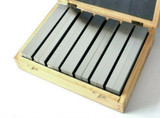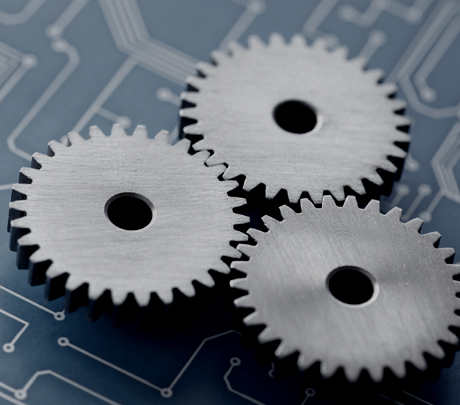How Does an Automatic CNC Tool Setter Work?
Posted by Jonathan Gee, EMG Precision on Oct 10, 2021
EMG PORTAL
White Paper:
How do CNC Tool
Setters Work?
How does an Automatic CNC Tool Setter Work?
Essentially tool setting is the analysis and determination of geometric distances such as the width of an object, the radius of an object and its height or length. In the case of CNC Tool Setting it more often than not refers to the measurement of cutting tools such as the measurement of the diameter and the length or height of the cutting tool.
The methods of proving these measurements are typically divided into two categories. Tool Setting products or processes are split into contact and non-contact types of, dependant on the design of the tool and its intended functionality. In brief, and as the names suggest, contact tool setters involve the physical touch of objects to find their spacial relations. Non-Contact Tool Setters use optical technologies such as lasers to function as triggers for taking measurements. We will discuss these different technologies in depth later.
Through the clever use of programming and software, other highly beneficial processes can be performed to streamline your operations. With extremely exact systems like the EMG Nano 500 it is possible to take compensation readings from your CNC machine to allow or adjust for thermal expansion or variation. With a particular type of Tool Setter it is possible to measure cutter wear and have your system automatically compensate for this variation in tool diameter to ensure your final part is correct and within specified tolerances. Automated systems can take advantage of other features possible with Tool Setting products like Broken Tool Detection. In a process where there are long repetitive runs, the operator can use a setting product to evaluate if cutting tool has broken by analysing its presence, or lack of. This can be highly useful in machining operations that have limited supervision and can save a lot of wasted machining time.
What Is A CNC Contact Tool Setter?
The first type of tool setter we will discuss are the ‘Contact’ type. This involves the object tool actually making physical contact with the measurement device in order to permeate a length or position reading. This type of tool setter can be further diluted into categories specific to measurement arms, often used on lathes, and probe or plunger style tool setter’s dependant on the manufacturers design or the particular application. Contact setters often have a range of models whose size and sensitivity are tailored for a range of cutting tool sizes.
What are the Advantages of CNC Contact Tool Setters?
- EMG's Tool Setters are IP68 Rated so they are suited for the harshest of environments.
- Affordable & Relatively Simple to Install.
- Return on Investment is easily achieved.
- Stable repeatability and Ultra Precision possible.
- Optical versions feature 10+ Million triggers.
What should I consider before buying a CNC Machine Tool Setter?
- Requires mounting within your useable XY footprint.
- Be aware of Tool Deflection with micro tools.
- Not suitable for edge profiling.
- Macros & Programming are likely required.
What Are CNC Machine Contactless Tool Setters?
Contactless or Non-contact Tool Setters make use of laser technology to create a beam that is sent from a transmitters and received. Any breaks in the laser beam are interpreted by the system and translated into the required measurements. It is not unusual to see these systems in a single housing with transmitter and receiver together or as separate physical units that speak to each other by laser beam.
What are the Advantages of a CNC Machine Contactless Tool Setter?
- Optics are typically fully enclosed due to no moving parts.
- It is possible to take measurements at high spindle speeds.
- Micro cutting tool deflection is not an issue with Non-Contact Tool Setters.
- More complex functions can be performed like checking cutting tools for chips or damaged edges.
What should I consider before buying a Contactless Tool Setter for my CNC Machine?
- Contamination of the transmitter and receiver lenses can cause issues with false readings and may require a more robust housekeeping program.
- Generally more expensive to invest in so it is usually wise to take advantage of all the extra possible functionality over Contact Type Setters.
- Installation & Programming can be more challenging.










 GBP
GBP US Dollar
US Dollar
 Euro
Euro
 Norwegian Krone
Norwegian Krone
 Canadian Dollar
Canadian Dollar
 Bulgarian Lev
Bulgarian Lev
 Polish Zloty
Polish Zloty
 United Arab Emirates Dirham
United Arab Emirates Dirham
 Australian Dollar
Australian Dollar
 Swiss Franc
Swiss Franc
 New Zealand Dollar
New Zealand Dollar
 Russian Ruble
Russian Ruble


